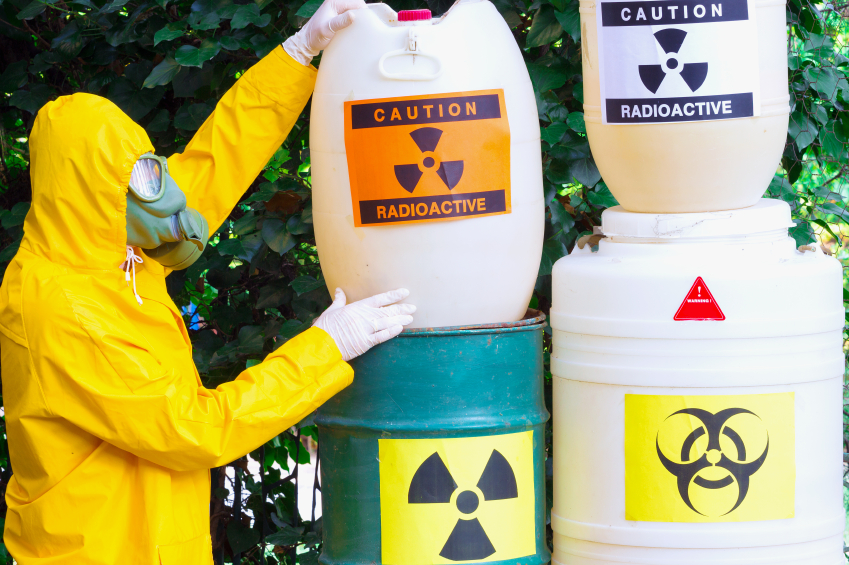In yesterday’s Advisor, we went over the first 5 tips from the Environmental Daily Advisor for HAZWOPER training. Today, we get the last 5 tips for an effective and compliant HAZWOPER training program.
 |
To recap: Effective and compliant Hazardous Waste and Operations and Emergency Response (HAZWOPER) training requires time and resources for facilities covered by aligned environmental regulations. Here are the last five of 10 tips for making compliance a little less complicated while maintaining site safety.
6. Create a plan for investigating new hazardous waste cleanup technologies—29 CFR 1910.120(o) requires employers to “develop and implement procedures for the introduction of effective new technologies and equipment developed for the improved protection of employees working with hazardous waste cleanup operations…” These procedures should include an evaluation to assess the effectiveness of the new technologies (including methods, materials, and equipment) before implementing their use on a large scale, and can include product information provided by manufacturers and suppliers. If and when new technologies are adopted, they should be incorporated into the site safety and health programs and must be made available to the Occupational Safety and Health Administration (OSHA) on request.
7. Understand the chain of command during an actual emergency —Since emergency response planning is often integrated with local, state, and sometimes, national emergency response plans and organizations, the chain of command during an emergency may evolve as more responders arrive. Initially, the person in charge is the most senior official on the site with responsibility for controlling operations at the site. However, according to 1910.120(q)(3)(i), “As more senior officers arrive (i.e., battalion chief, fire chief, state law enforcement officials, site coordinator, etc.) the position is passed up the line of authority which has been previously established.”
You won’t find a more thorough and effective course related to hazardous waste operations to help meet the employee training requirements of OSHA’s HAZWOPER regulation than BLR’s HAZWOPER Training Program®. Get the details.
8. Vet training providers to ensure they are competent and adequately qualified—There are many lessons to be learned from the catastrophic BP Gulf of Mexico oil spill, not the least of which is that dire emergencies bring out opportunists and scammers. In this case, HAZWOPER training was found to have been offered by private companies that did not meet the rigorous requirements for 40-hour training for oil spill workers. As a result, many people paid for training that was not only dangerously inadequate, but that may also have been simply a scam to cash in on the rush to get spill-related cleanup jobs. Specifically, 29 CFR 1910.120 states that trainers teaching any of the subjects covered in the regulation must themselves have received training, “such as that offered by the U.S. National Fire Academy or they shall have the training and/or academic credentials and instructional experience necessary to demonstrate competent instructional skill and a good command of the subject matter of the courses they are teach.”
9. Know the difference between an ‘emergency’ release response and an ‘incidental’ release response—An emergency release response is “a response effort by employees from outside the immediate release area or by other designated responders (i.e., mutual aid groups, local fire departments, etc.) to an occurrence which results, or is likely to result, in an uncontrolled release of a hazardous substance.”
On the other hand, an incidental release response is one where the release can be handled (i.e., absorbed, neutralized, or otherwise controlled) by employees nearby or maintenance workers at the time of release and that poses no threat to safety or health. Incidental release responses are not considered emergencies and thus are not covered under the scope of 29 CFR 1910.120.
10. Exercise caution concerning equivalently trained new employees—When a new employee claims to have previous HAZWOPER training, it is best to err on the side of caution until that training is confirmed and qualified as appropriate. Anyone completing HAZWOPER training at any level should be in possession of a written certificate verifying such training, and this certificate, as well as other academic documentation or documentation of work experience, can be used to establish the level of training previously acquired and the level of additional or refresher training needed for the employee’s intended job responsibilities.
Your Search for HAZWOPER Training Is Over—We Guarantee It!
BLR’s HAZWOPER Training Program® includes 17 training sessions on DVD, a 200+ page HAZWOPER training manual with tests, handouts, completion certifications and an electronic version of the manual so you can easily take it anywhere. Learn more.
Facilities operating in one of the OSHA “State-Plan” states that have full jurisdiction for their own worker safety and health programs should consult their state agency to ensure they are in compliance with regulations that may be more stringent than the federal.
